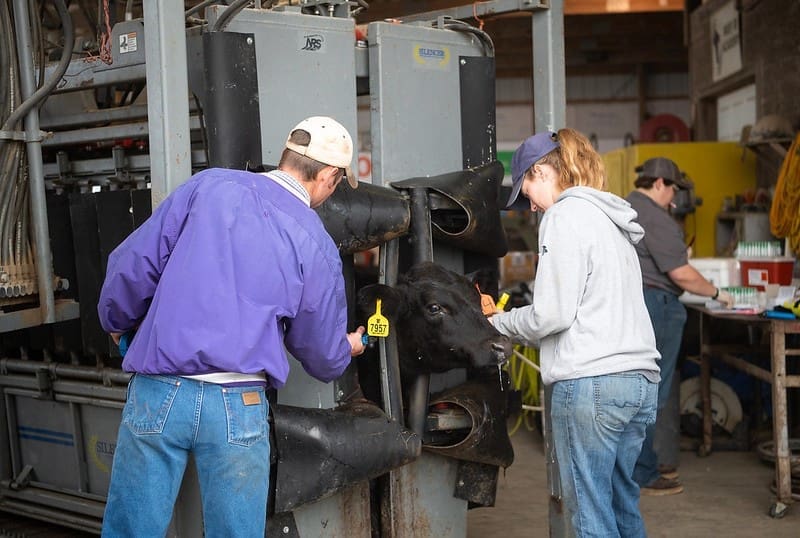Kansas State University Beef Cattle Institute veterinarians Brian Lubbers and Brad White discussed the issue of whether there is a limit to how many vaccines cattle can receive simultaneously in a recent Cattle Chat podcast episode.
The veterinarians stressed the need for caution when administering bacterial vaccines that contain high levels of endotoxins, as excessive exposure could potentially lead to shock in the animal. There is a belief that giving multiple shots, such as five, at once might overwhelm the animal’s immune system, resulting in a weaker immune response compared to spreading out the vaccinations.
To prevent overwhelming the animal’s system, Lubbers suggests spacing out the vaccinations. He recommends administering three shots in the spring and three in the fall instead of giving all six at once.
The duration of immunity provided by vaccines can vary. Some antigens or pathogens may offer short-term immunity lasting six months to a year, while others provide longer-lasting protection. In addition, the vaccination protocols and the ability to space out shots differ between cows and calves.
White advised producers to consult with their local veterinarian to develop a vaccination plan and ask the following questions:
- What is being administered in the current vaccination protocol?
- Is there something missing that we should add?
- What diseases have we seen in our herd?
- What diseases are in the area?
- What biosecurity practices should we be following when cattle are moved in and out of the herd?
The full discussion is available here.













